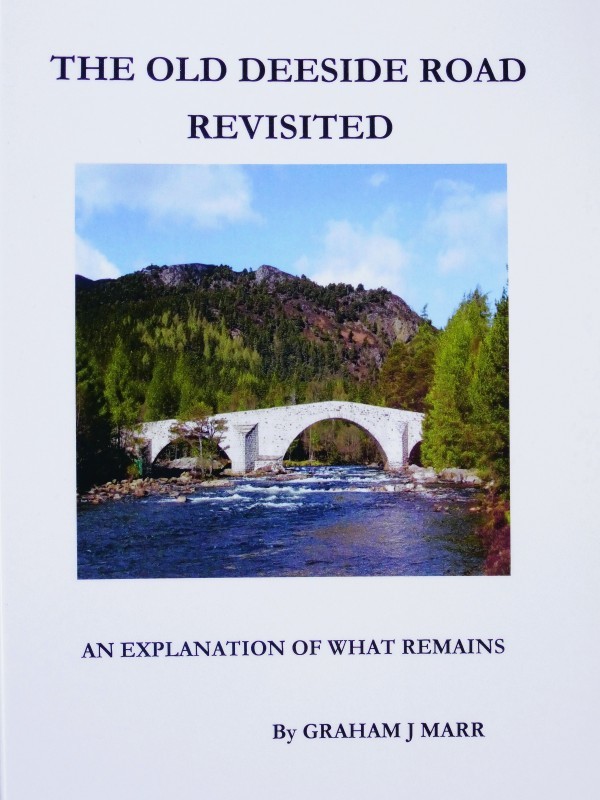Published by Deeside Books
After buying an out-of-print copy of the book The Old Deeside Road (Aberdeen to Braemar): Its Course, History and Associations, local author Graham J. Marr was intrigued enough to begin his own investigation into what remained of this ancient thoroughfare along the valley of the Dee.
The original version of this title was first written by George Milne Fraser in 1921. Mr Fraser was head librarian of Aberdeen Public Library during the period 1899 to 1938, and published many books and pamphlets on the local area. However, The Old Deeside Road was his largest and most detailed work and is probably regarded as one of the classic local history books. Even in his day, some of the old road between Aberdeen and Braemar had already disappeared, and he set about recording both what was left and also its historical associations. Now, almost
100 years later, the same task has been repeated and updated in this new volume.
The origins and history of the old road from Aberdeen to Braemar were recorded in Fraser’s book, but this contemporary appraisal of what is still left on the ground takes into account the more recent developments and changes.
Most of the original photographs in Fraser’s book have a modern equivalent for comparative purposes, but there are also many additional photographs in this book that help to identify and illustrate those parts of the road that still survive. An appraisal of the relevant Ordnance Survey maps that cover the area is also included as well as coloured location maps that give an overview of those parts of the old road that still exist.

